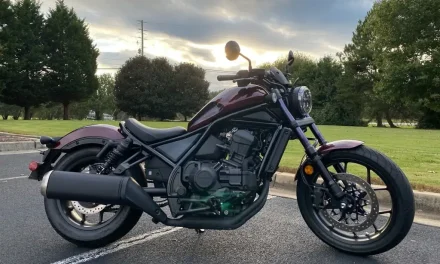The motorcycle industry has seen many groundbreaking models that have pushed the boundaries of technology and design. However, not all of these innovative machines have been successful in the market. In this article, we explore the story of one such motorcycle—a machine that should have been a world-beater but somehow missed the mark. This tale is masterfully told in the video at the end of this article that delves into the history of the Honda CB450, also known as the “Black Bomber.”
Let’s take a closer look at the highlights why this motorcycle, despite its advanced features, didn’t capture the hearts of riders of its time.
1. The Revolutionary Honda CB450

In the late 1960s, Honda introduced the CB450, a motorcycle that was years ahead of its time. The CB450, with its double overhead cam and high-revving engine, was a technological marvel that set new standards in the motorcycle industry. Honda was already a giant in the motorcycle world, selling half a million bikes worldwide, but their lineup lacked a big sport bike that could compete with the dominant British twins and Harley-Davidson models.
The CB450, also known as the Black Bomber, was Honda’s bold attempt to capture the attention of hardcore motorcycle enthusiasts. It boasted an all-alloy double overhead cam engine that could rev past the competition, and its torsion spring valves—a feature derived from racing—offered less friction at high speeds. On paper, the CB450 was a beast that could go over 100 mph, with 43 horsepower at 8500 RPM. Yet, despite these impressive specs, it struggled to outpace its British rivals on the road.
2. Style Over Substance?

One of the main issues with the CB450 was its styling. While the engineering was cutting-edge, the visual appeal didn’t match up to the expectations of riders at the time. The Black Bomber’s bulky tank and overall design didn’t resonate with consumers who were used to the sleek lines of British bikes. Although the CB450 came with features like an electric start—a decade ahead of Triumph’s twins—it simply didn’t look the part.
Custom tanks that better matched the bike’s flow were available, but the CB450 failed to distinguish itself from Honda’s smaller models. It didn’t stand out like the later CB750 would. Despite being ahead of its time in many ways, the Black Bomber didn’t have the aesthetic appeal to win over the market.
3. The Market’s Response and Honda’s Revision
Despite its advanced technology, the CB450 did not become the hit Honda had hoped for. Its initial reception was lukewarm, and it didn’t significantly dent the market share of its British and American competitors. In response to this, Honda released a revised version in 1967 with improved looks and performance, addressing issues like carburation and gearing.
Even with these improvements, the CB450 still didn’t achieve the sales success Honda desired. However, the lessons learned from the Black Bomber’s shortcomings were invaluable. Honda took this knowledge and applied it to the development of the CB750, which would become a legendary success and set a new standard for motorcycles.
4. The Legacy of the Black Bomber
The CB450’s story is a poignant reminder that being the best technically doesn’t always translate to market success. The Black Bomber was a stepping stone for Honda, a necessary experiment that paved the way for future triumphs. While it may have been too advanced for its time, the CB450’s influence can be seen in the evolution of motorcycle technology.
The Black Bomber’s legacy is a testament to Honda’s commitment to innovation and their understanding that progress sometimes involves taking risks that may not pay off immediately. The CB450 may not have conquered the market, but it played a crucial role in shaping the future of motorcycling.
In conclusion, the Honda CB450’s story, as recounted in the comprehensive YouTube video, is a fascinating study of how a motorcycle that should have been a game-changer ended up as a footnote in history. Its tale is one of innovation, design, and market dynamics—a reminder that in the world of motorcycles, as in life, timing and perception are often just as important as technical excellence.









